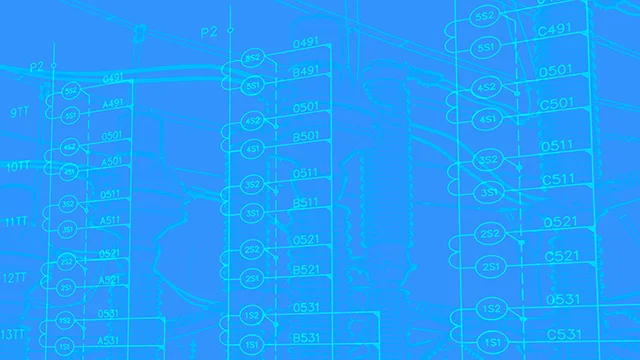How is BIM Modeling creating smarter substation designs?

Embedded data allows designers to do more with less.
With growing energy demands and an aging and shrinking workforce, utilities are forced to do more with less. BIM (or Building Information Modeling) allows designers to do just that by adding an additional dimension of information to existing design. This technology has been around for decades, but recent changes have now made it a viable option for substation designers.
While original uses of BIM focused on large designs like hotels or stadiums, substations can also see significant benefits from this technology. Recent updates in software like Spatial Business Systems’ “Substation Design Suite (SDS)” for AutoCAD for Electrical, AutoCAD Map3D, and Inventor have made design software better tailored to substations – and, as data-storing programs work directly with BIM models, this has removed the last barrier to entry.
What is BIM modeling?
BIM is also known by some as Intelligent Design and Construction (IDC) or Intelligent/Smart Schematics. Simply put, BIM is just more intelligent design. It stores data within the design models, eliminating the need to store information in separate spreadsheets, and creating efficiencies for designers.
For example, if a designer is doing a physical design of a substation, big equipment is top of mind. However, this big equipment gets connected down to foundations, which means nuts and bolts. Normally, every nut and bolt must be accounted for. How long are the bolts? How many are there? How many nuts and washers? Small items like these are one of the easiest items to tally incorrectly, and the bottom line is that a substation can’t be connected if you haven’t counted all the pieces correctly so that you have all your equipment in the field. An easier way to get accurate bill of materials goes beyond nuts and bolts, to the the insulators and hardware, that have growing costs and lead times. With BIM modeling, instead of manually storing this info in spreadsheets, it’s built in and calculated by the design software.
How can BIM Modeling benefit substation design?
This marrying of data to existing models has many clear-cut benefits:
Reduction of man hours spent on design. Autodrafting of some components is a feature of BIM. For example, once schematics are created, wiring design involves only a couple of clicks. This saves a lot of time and effort.
Faster project design. BIM can heavily leverage standardized designs. Many standard components and layouts, models, and deliverable drawings can be created quickly and to a high level of quality by only having to modify the main data model.
Reduction of risk associated with human error. Like the example above demonstrates, BIM modeling reduces the need for manual information tracking, which then reduces the potential risk of a human error in calculations.
What are the other possibilities for BIM design?
While this creation of a 3D model is already innovative for substations, there are additional benefits that can potentially be captured with BIM modeling by designing in dimensions. Below are each dimension with its added benefits.
How do you decide if BIM modeling is right for your substation design?
One of the most important purposes of drafting and modeling in substation design is to ensure that the construction crew in the field has all the information and material necessary to build the substation. Making information easily digestible by the field and easier to understand is key. Because of that, almost every project and team can benefit from even the lowest dimensions of BIM.
Something to keep in mind, however, is that the biggest impediment to converting to a BIM workflow for most, is navigating all of the ins and outs of new software, processes, and concepts. Having a roadmap in place early will help you avoid pit falls and set your teams up for success.
How is Black & Veatch using BIM modeling software?
Black & Veatch has been using BIM design software and its precursor in other industries for decades. We have more than 40 years of experience with BIM, beginning with a custom design tool we created in the 1980s that is still used for power generation design today. We also have extensive experience with related tools in the Water, Oil & Gas and other sectors. The newest implementation is focused on using BIM for civil/structure and electrical design (protection and controls) for substations. Between 40-50 users are using BIM software for substation design at any one time. Contact us to learn more about BIM best practices and how our substation team can use it to create efficiencies for your project.
